Succulents: description, types and care at home

Today this may seem strange to many, but there used to be a profession of a gardener, whose tasks included caring for outdoor and indoor plants. Some modern people are sincerely surprised why such a person is needed, because caring for the same indoor plants is very simple - there they grow in any office and on every windowsill. However, most of the current indoor plants have become popular precisely because they are succulents. Although their cultivation has become a global trend only in recent decades, you are probably familiar with them - all that remains is to fill in the gaps in your own knowledge.
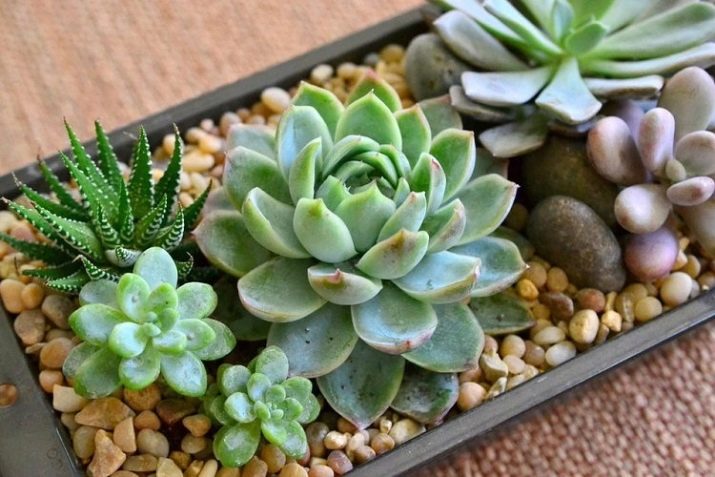
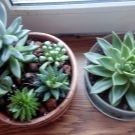
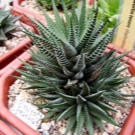
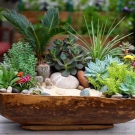
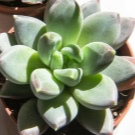
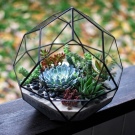
What it is?
Succulents are a common name for a whole group of plants that may not be related to each other at all, even distant ones. What unites them is their typical natural habitat and the way these species solved the problem - they grow in desert and arid regions, and they can accumulate moisture in large quantities in special types of tissues. Because of these tissues, their trunks and branches often take on a characteristic thick, fleshy shape.
There are a lot of examples - first of all, the well-known cacti, as well as aloe, Kalanchoe, agave, euphorbia and many other similar plants.
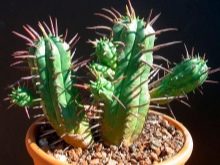
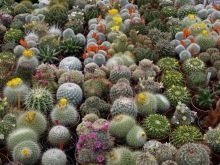
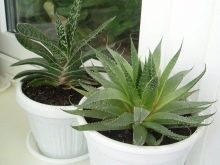
A typical description of succulents from an inexperienced person often also includes such traits that are necessary for the plant as the absence of leaves in favor of thorns and the presence of poisonous sap. Such characteristics are indeed inherent in many types of succulents, but in fact they are not obligatory for them.... In addition, the presence of one or even several signs characteristic of succulents does not yet mean that we are dealing with a succulent, unless there are special tissues for the accumulation of water.
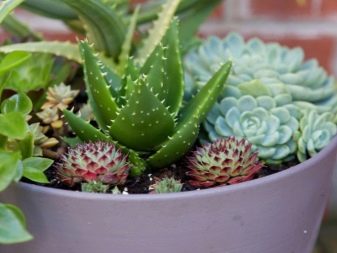
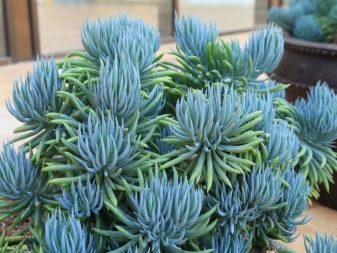
Although succulents are undemanding to living conditions, this does not mean that they are devoid of natural beauty. Many of these plants in the home garden are prized not only for their ease of care, but also for their bright green color, and the flower of many species of the same cactus usually stands out in sharply contrasting reds and pinks. All this makes a guest from arid countries welcome in our apartments, especially in winter, when you will not see such bright colors on the street.
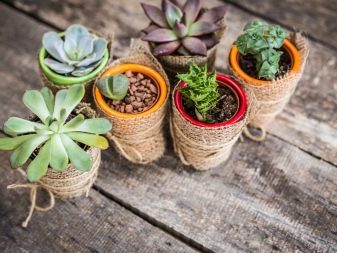

Views
Succulents are a very large group of plants; they belong to several families at once, often not having a close relationship with each other. Most often, representatives of this group belong to the Tolstyankovs or Kaktusovs, Agavovs or Lileyns, Aizoonovs or Molochainy.
Since assignment to succulents is not the basis for biological classification, in any of these families there is a variety that is unable to accumulate moisture in tissues, therefore one or another species should not be automatically assigned to this group, just by the name of the family.
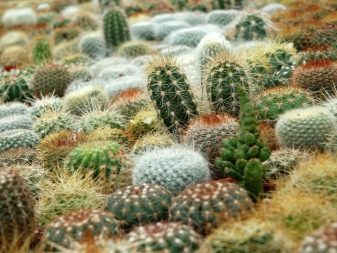
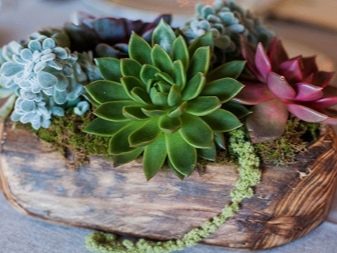
All succulents can be globally divided into two categories, which is actively used by modern gardeners. The first group is leafy succulents, which are often not perceived as such, since they have leaves, and moisture accumulates in them. It is here that the classic fat woman and aloe, as well as rejuvenating (commonly known as the "stone rose") should be attributed.
Another group of succulents - stems, in which the accumulation of water occurs mainly in the trunk, and the leaves are relatively small or none at all.It is here that cacti and euphorbia are ranked, as well as various species of groundwort.
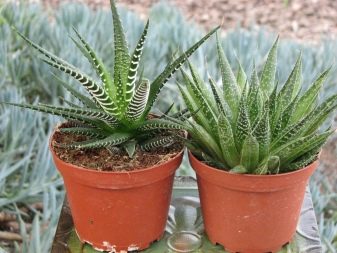
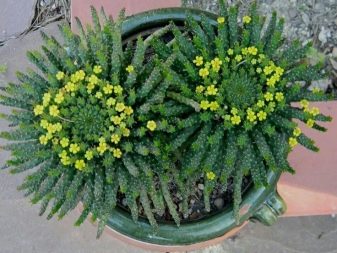
Cactus and Tolstyanka are not rarities, they can be found in almost any home, since they also agree to the most Spartan conditions. Among other families, there are quite a few rare species that are unfamiliar to most of the inhabitants. Moreover, if earlier succulents were grown individually in separate pots, today a very popular phenomenon is a mix - a whole composition of plants of this type in one vessel. Much attention to succulents has led to the fact that breeders have developed completely new varieties that do not exist in nature - for example, the famous Crassula "Temple of Buddha".
Succulents are considered to be relatively compact table plants, but even among them there are ampelous species - those that are reasonable to grow in hanging pots and pots, since the long leaves of the plant can hang down. This type of plant allows you to decorate the room with greenery, not being limited to only one window sill.
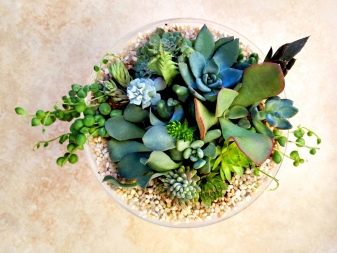

Conditions of detention
In their natural habitat, succulents usually face rather difficult conditions - there are certain problems with water, it can be very hot, the soils are usually not particularly fertile. Paradoxically, it is not necessary to create an ideal comfort for a plant of harsh deserts in our understanding - all the mechanisms of this organism are adapted for survival in such conditions, therefore, improved watering or the desire to add extra fertilizers to the soil usually does not lead to good.
Moreover, all these cacti are so highly prized precisely because they can be left to themselves. You can, for example, not water them for a month or even two - and they will have nothing, which is very convenient in the conditions of the modern hyperactive world. At the same time, experts say that a certain regime should still be adhered to. The fact is that the plant will be as beautiful as possible only if we provide it with conditions close to those that are familiar to it at home.
It is quite difficult to bring a succulent to death, but if it goes into an economical mode, you will no longer be able to enjoy all its beauty - until you change your attitude towards it.
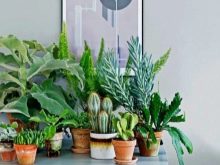
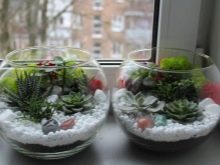

Lighting
Since succulents are guests from the far south, they cannot be surprised by bright sunlight - they need it to survive. At the same time, it is worth remembering that some of these plants can also originate from our latitudes, then they, like, for example, most of the Tolstyankov family, need a lot of rays, but not direct, but scattered ones. Typical domestic succulents such as cacti, Kalanchoe and aloe, nevertheless come from deserts and open mountainous areas, so for them direct sunlight is synonymous with comfort. Such greens are usually grown precisely on the south side, in the summer they are specially taken out into the open space.
Winter, contrary to all expectations, is not a huge problem - although there is less sunlight, the plant does not die, but simply goes into a long hibernation. However, the pet will not survive without light at all, so try to choose a relatively lit place for it.
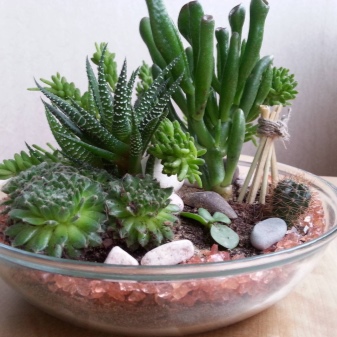
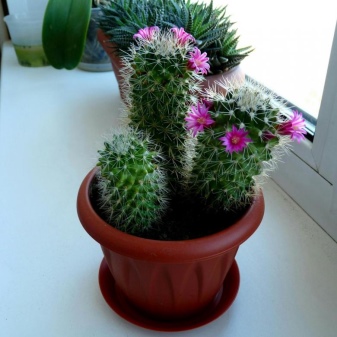
Temperature and humidity
There are no specific temperature recommendations for all succulents in general - it all depends on the natural conditions in which this species usually grows. In general, it would be correct to say that such plants love heat and do not really like cold, but everything is relative here, therefore it is better to be interested in the appropriate temperature for each individual species.
For cacti, for example, it is recommended to move outside in the summer, where they will be roasted in the sun, and in winter they should only be kept in a warm room.
Some average conditions for everyone are as follows: on a summer day it should be 25-30 degrees with a night temperature decrease to 15-20 degrees, and in winter some are able to withstand only 5 degrees of heat, although it is better to limit yourself to the usual home 15-20 degrees.


It is important to provide full air access to the plant from all sides. Living in a desert area, the typical succulent breathes with all of its parts, including the root system that is underground. This means that even the soil must allow air to flow to it, so you can imagine how uncomfortable it is for such a plant to be indoors. Good ventilation is considered a prerequisite for growing a beautiful and healthy plant.
Note that many succulents, as plants from arid regions, are very fond of moist air. This is because in the absence of precipitation over a long period, succulents learn to extract moisture literally from everywhere - including sucking it in directly from the air. Again, you should not create comfort for the plant in your understanding - you will not be able to simply compensate for dry air with increased watering, since tissues located close to the surface of the leaves can be focused on obtaining water from atmospheric moisture.
With dry air and abundant watering, you run the risk of overdrying the leaves of the succulent, creating an unnecessary threat of root rot.

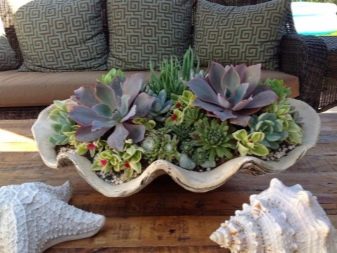
Landing
If we consider all succulents as a whole, then there are four different ways to plant a new specimen at once. Please note that not every method is suitable for absolutely all types, and some that allow a choice of planting method are much easier to plant with one specific method than any alternative ones.
Immediately, we note that one of the methods - reproduction by seeds - is practically not used in home breeding. This method is the best for breeding new varieties, because it is often used by professionals, but it is also distinguished by the maximum complexity and laboriousness. Succulents as a home plant are often chosen by those who would like to reduce their own efforts to a minimum, so you should not be surprised that this method is not popular among the common people.
The other three methods are much simpler, their complexity is roughly comparable to each other. You can propagate a succulent by cutting, by a rooted part of its own leaf, or even by special daughter formations - the exact choice depends on what type of plant you are going to plant.
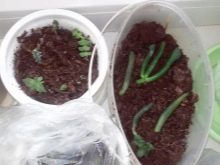


All three options are slightly different parts of the plant, but the care for all of them is about the same. The cut off stalk or leaf fragment is dried for a couple of days, after which the cut is lubricated with a growth stimulant and directly planted in the moistened soil, slightly pressing it into the depths. The use of fertilizers is not even always appropriate, because succulents cling to life with all their might, and parts of the leaves sometimes take root into the soil, even just lying on its surface, without dropping it. At the same time, one should not wait for a miracle immediately - the plant usually takes root after about 2 or even 3 weeks.
Whatever the type of plant, organic fertilizers are usually not welcome, moreover, the soil should contain less organic matter than is average. For this reason, avoid the use of ingredients such as humus, chernozem or peat during the preparation of the soil mixture. A mixture of turf and river sand, possibly with a little clay added, may be the best solution.
Remember that the soil should be abundant in voids and easily allow air and moisture to pass through, therefore there should not be a lot of clay and large stones, but small sea shells or pebbles are even welcome.
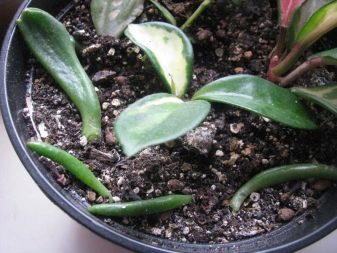
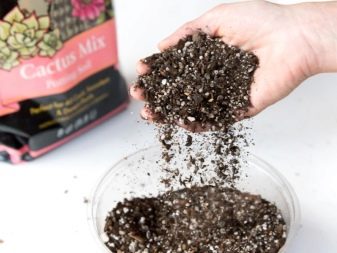
In order for the succulent to grow correctly and quickly, the pot is often filled with contents in several layers.At the very bottom, there must be drainage, the vessel itself, of course, must include holes for the drain of excess water. The soil (the mixture described above) follows on top of the drainage, a small layer of ordinary sand is added above the ground, after which another thin drainage layer is made at the top. From the outside, by the way, such a composition looks quite attractive, because succulents are often grown in transparent containers.
In nature, a plant, in search of groundwater, can spend a significant part of its energy on the growth of the root system, but we do not need it - if anything, we just add water. Therefore, a succulent plant is usually planted in a rather tight container, so it can (and has to) build up the aerial part faster, because, as we remember, it can also suck moisture from the air. As it grows, the specimen can be transplanted, but you should not get too carried away with this - usually the change of the vessel is required every 1-3 years, depending on the type and productivity of the size increase.
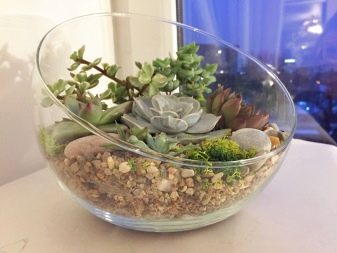
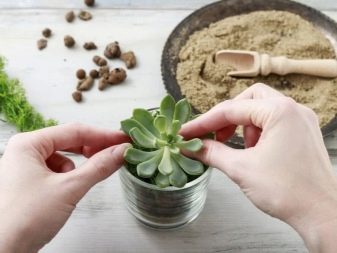
How to care?
It is not known what exactly forced modern people to massively grow succulents - their unusual appearance or still the minimum required care at home. With the constantly deteriorating ecology, humanity is experiencing an increasing need for fresh greenery, and in cool regions it is felt even more strongly - in cold winter, often only an evergreen cactus on the windowsill reminds of summer. Fortunately, growing a succulent plant is a snap, even if you're a busy person. Above we described the rooting process, which turned out to be very simple, and further maintenance of the plant will not be more difficult.
When growing succulents, the main thing is to remember that this plant is unpretentious in the sense that it does not need many amazing amenities that it did not have in its homeland. Thus, a supposedly unpretentious plant that can survive in any conditions is quite easy to destroy, taking care of it excessively. Therefore, certain recommendations for care still exist - a person caring for a succulent must know how not to overdo it.


Watering
Succulents are famous as plants that, even with a prolonged absence of watering, are able to survive - that is why they are appreciated in the modern world, since they do not tie their owner to the house on a permanent basis, allowing him to leave as needed. Botanical species of this group not only store an abundance of moisture in their own tissues, but also know how to save it if necessary, most species have also learned to get it directly from the air - if, of course, there is something to get from it.
In practice, this means that frequent watering is simply not necessary for the plant. It all depends on the specific species and what conditions it is used to in the wild, however, in general, succulents are advised to water in small portions 1-3 times a week - this is in the summer, when the plant is actively developing and blooming. In winter, faced with a somewhat unusual coolness, the southern guest usually hibernates.
Of course, he needs water at this stage, however, large-scale metabolic processes do not occur inside, therefore the dosage remains the same, but the frequency is greatly reduced - literally up to 1-2 times a month.
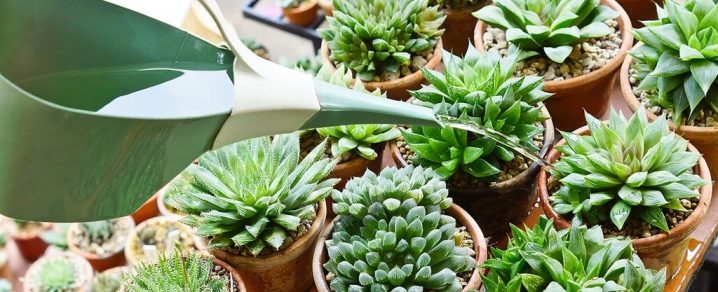
In this case, you can always, even in the summer, you can safely leave for a few days or even a few weeks. For a plant of this type to die, you need to forget about it for many weeks or even several months - if you still need a succulent, you will definitely return to this moment. At the same time, the water saving mode, into which the greens have switched, affects its appearance - it may seem dry, as if it will not bloom and grow new pulp, the peel may become woody.Perhaps such transformations will somewhat disappoint the gardener, but in most cases it is possible to bring the bush back to life by resuming the normal watering regime. Albeit not immediately, but the copy should bounce back.
It is much worse if there is an excess of water. The accumulating excessive moisture often provokes rotting of the root system of plants, especially those that are not used to heavy rainfall. Here the situation is already more critical - it is not a fact that a decrease in the level of watering will help the rot to stop. Succulents are usually not very dependent on roots, but they cannot do without them, so the plant will begin to wilt. If you are sure that the problem lies precisely in the decay of the root system, be sure to try propagating the plant in case it still fails.
Be sure to figure out why the problem arose: perhaps the watering was not excessive, it was just that the soil itself was selected incorrectly and did not allow moisture to pass through well.
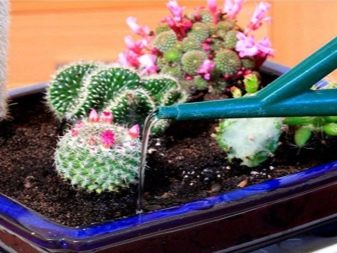

Fertilizer
Most succulents grow in the desert regions of the planet, where there are really no other plants besides them, and therefore the soil is very poor in terms of any organic matter. For this reason, plants of this group not only do not need organic fertilizers - they are even contraindicated for them, because the use of humus and peat, traditional in home gardening, is completely excluded.
Another thing is mineral fertilizers, especially those that contain phosphorus and potassium. However, even with them, one should not be zealous, and the exact dosage for succulents in general cannot be announced - this indicator strongly depends on both the type of plant and its size. What is true for all species of this group is that fertilizers are applied only during the period of active growth, that is, in the warm season, while in winter it is better not to touch the plant at all.
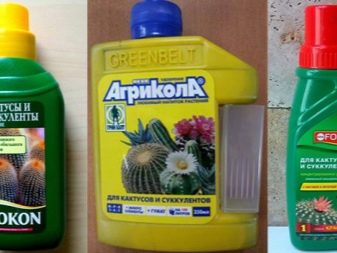

A great convenience for gardening in the modern world is that for many popular types of garden and indoor plants, special mineral mixtures are produced, in which all the necessary ingredients have already been selected in optimal proportions. Such products are produced with the participation of specialists, therefore the packaging often lists not only the plants for which the mixture is intended, but also the recommended frequency of use, as well as dosages.
If you purchased such a product from a good gardening store, you can usually trust its instructions, just do not deviate from the described recommendations, otherwise there will be a risk of ruining the plant.

Interior use
Most people who want to see growing greens at home without spending too much time and effort acquire literally one or two small succulents in separate small pots that decorate the room, rather symbolically - an inattentive person may not even notice such an interior detail.
At the same time, there is an opposite approach: the so-called "cactusists" are able to make their apartment with succulents so densely that the installation of them automatically becomes the central element of the interior of the house. Some examples show that real works of art can be created from these indoor plants.
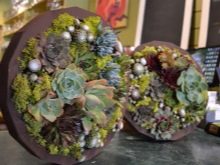
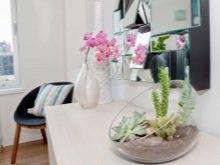

Succulents as a material for creativity are good for the reason that, despite the general similarity with each other, they are still able to differ - in size, shape, and shades. Their owner may be extremely far from drawing up full-fledged pictures or complex compositions, but the geometric correctness of the arrangement of individual pots is already capable of creating a positive impression. In the photo, we see how small differences in the appearance of each of the rows can please the eye.
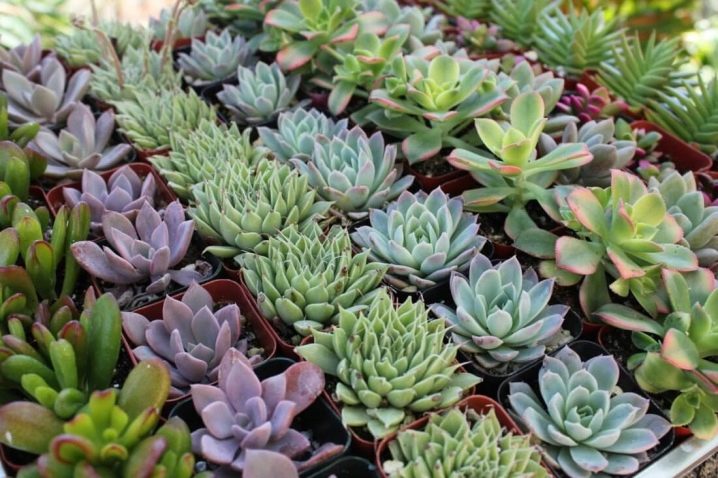
At the same time, some succulents, even not blooming at a particular moment, outwardly slightly resemble classic flowers.Having planted them correctly in a cramped pot so that the soil is not visible, you can create a kind of bouquet, which will have a huge advantage over the present - it will not wither in a week or a month.
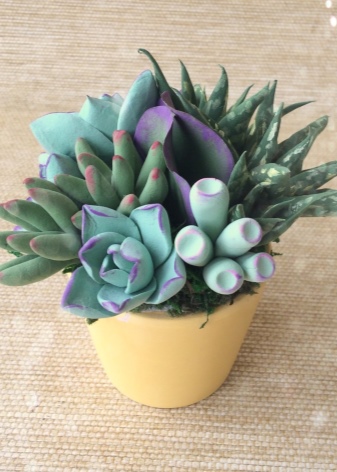
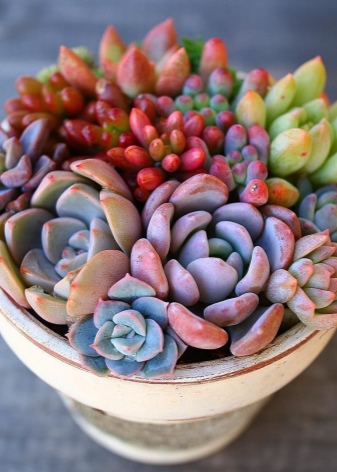
A popular solution is the so-called florarium. In appearance, it somewhat resembles an aquarium or a terrarium, since in fact it is a transparent pot, in which the soil level does not even reach half, and the plants themselves remain entirely inside, as it were, without protruding outward. The task of the person creating the composition for the florarium is to try to create a "piece of natural nature", although in fact the species he has chosen may not even grow on the same continent.
If everything is done correctly, the picture assembled from succulents will seem to be a full-fledged corner of the southern countries, which was carefully separated from the rest of the soil and brought to our latitudes unchanged.

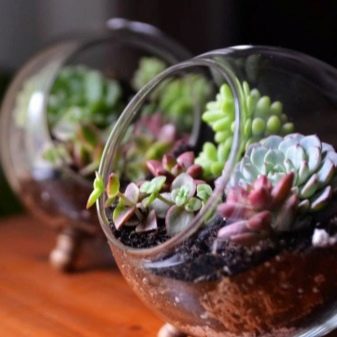
The florarium in most cases still imitates an abundance of greenery, but the association with the south is not necessarily dense thickets. All these cacti and agaves often grow in a desert area, where there is practically nothing but them, and there is only sand, but it still reminds of a hot summer and creates a unique flavor of the south. To convey a typical desert picture, you can use the same succulents, carefully selected and planted on clean sand with the addition of shells to enhance the impression. If you still doubt that it can look attractive, take a look at the composition in the photo.

Typically, green collections occupy horizontal areas in the room, but some "cactusists" prefer to collect entire wall panels. It should be noted that this is a rather difficult task, since succulents occupy a central position in it, but they are not the only detail - at least you also need to spend money on some shelves and pots that will hold the greens in weight, or try to make them yourself.
Having built a structure similar to that shown in the example below, you will almost certainly achieve one hundred percent uniqueness of the interior of your home, which today is considered an indicator of good taste. It will be doubly pleasant also because this is not a thing made by someone else's hands, bought for a lot of money, but a personal creation.
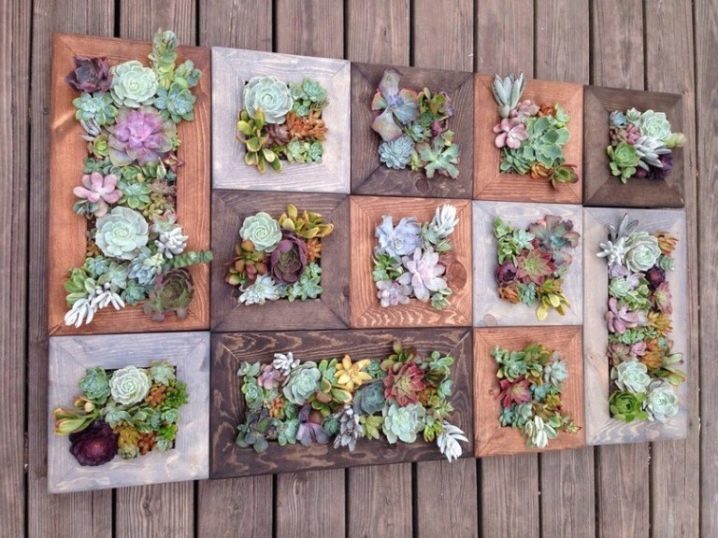
In the photo from the panel, it is noticeable that it is divided into several fragments - this is necessary at least in order to keep the ground in an upright position. If you use this approach, then each individual frame can be an independent decoration for the room, as if creating a picture. Of course, it will be difficult to collect a well-recognized image from succulents, therefore, most likely, you will have to limit yourself to abstract subjects, but then the brightness of the shades will be even better than if you used the brightest colors, since such a picture will have a very natural three-dimensional effect.
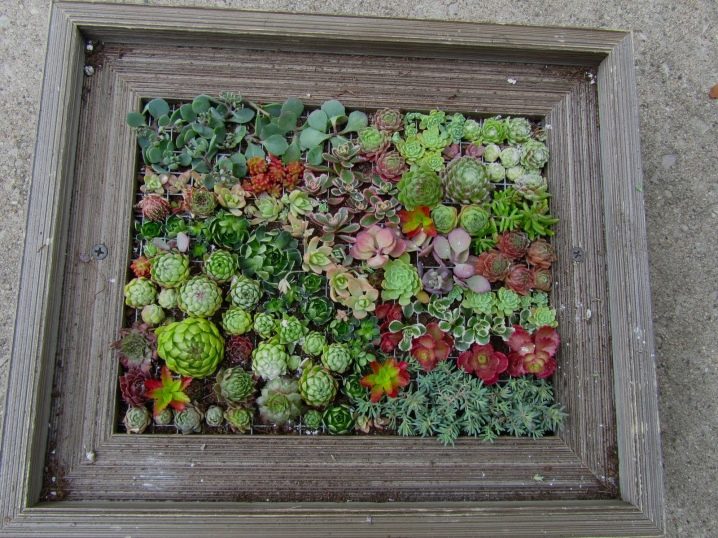
For the best succulents for beginners, see the next video.























































The comment was sent successfully.